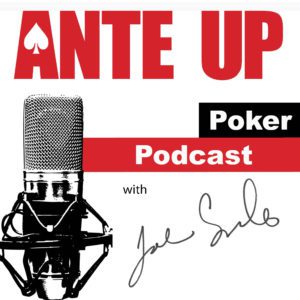Year after year, hold ’em consumed most online poker traffic. That pattern shifted during 2025 as mixed game variants captured unprecedented player volume. The change appears most pronounced at poker sites, where unregulated platforms introduced experimental formats previously unavailable.
Omaha participation jumped 12 percent year-over-year, while the H.O.R.S.E tournaments are filling faster than ever. The global online poker market reached 4.24 billion dollars, with mixed games accounting for a growing market share. Experienced players explain the appeal simply. Hold ’em becomes predictable once mastered. Mixed games demand continual adaptation and deeper strategic thinking.
What Sets Mixed Game Poker Apart?
Mixed game poker rotates between multiple variants during single sessions. Players encounter hold ’em, Omaha, stud, razz, and lowball formats sequentially. Each game demands different strategic approaches and hand evaluation methods. This contrasts sharply with standard online poker, which locks players into single formats.
Mixed games require broader skill development across diverse rule sets. Players cannot rely on memorized patterns or narrow mathematical edges. Instead, they adapt constantly to shifting game dynamics and opponent adjustments. The format rewards genuine poker understanding rather than specialized exploitation techniques.
Mixed game poker emerged from casino cash games decades ago. Professional players historically viewed it as the genuine test of comprehensive skill. During 2025, online platforms began offering these variants at a scale previously unavailable. As per data, the poker market size is estimated to grow at a CAGR of 10.5% from 2025 to 2034. Among the contributors to this trend are online poker rooms for GamStop players, which continue to attract traffic by offering broader game selections and fewer entry barriers. These platforms invested in software infrastructure supporting multi-variant rotations. The growth reflects players’ hunger for authentic competitive challenge beyond algorithmic hold ’em strategies.
Who Dominates Mixed Game Tables Currently?
Mixed game tables feature predominantly experienced poker competitors seeking legitimate skill challenges. Recreational players typically avoid mixed games due to steep learning curves and consistent losing patterns. The core player base comprises individuals with 8-plus years of serious poker experience. These players maintain a comprehensive understanding across stud hand rankings and Omaha strategy principles.
Professional poker players represent a significant mixed game population segment. Semi-professionals constitute a growing secondary demographic generating sustainable income through mixed game specialization. Female participation in mixed games reportedly exceeds single-format percentages, suggesting format appeal transcends traditional demographics. Regional mixed game participation reflects established poker infrastructure, poker culture and timing expectations, and regulatory environments. Together, these factors contribute to a stable yet evolving player landscape, where mixed games continue to attract those seeking deeper strategic engagement beyond mainstream formats.
North American players comprise approximately 38% of global mixed game volume. European participation reaches 42%, concentrated within unregulated jurisdictions. UK markets show disproportionate growth through poker sites not on GamStop, offering expanded format selection. Scandinavian countries demonstrate emerging participation driven by professional player communities and innovation-friendly regulation.
Asian markets remain underdeveloped for mixed games, specifically, despite massive general poker expansion. Canada’s growing participation points to a knowledgeable player community and a refined poker culture. By contrast, GamStop-regulated brands maintain limited market presence in mixed games because of regulatory restrictions.
How Platforms Now Support Mixed Game Poker?
Software development accelerated dramatically during 2025. Major operators invested heavily in multi-variant table infrastructure. Player interfaces now accommodate game rotation seamlessly. Table availability expanded across prime hours. Mobile compatibility has improved significantly for mixed game formats. Accessibility features enable smoother navigation between game types.
Competition intensified between regulated and unregulated operators. Poker sites not on GamStop captured market share through superior format variety, whereas GamStop-compliant sites struggled to match format diversity. Non-GamStop operators innovated faster without regulatory constraints, introducing tools and tips to build confidence at online poker tables that appeal to less experienced players. Market data shows unregulated platforms now dominate mixed game volume. This competitive gap continues widening as player preferences shift.
2025 Participation Growth Numbers
Activity in mixed variants climbed 16% compared with last year. The global player base expanded to 2.2 million. Takings from cash play advanced 20%, and tournament turnout improved 15%. Geographic performance varied significantly across regions. European markets outpaced North American growth considerably.
Omaha variants lead adoption at 36% participation rates. Seven-card stud maintains 26% player engagement. H.O.R.S.E formats represent 23% market share. Razz and alternative games comprise 15% collectively. Omaha growth accelerated fastest, increasing 24% annually. Stud participation remained relatively flat despite format maturity. H.O.R.S.E interest grew steadily, rising 18%. Mixed format experimentation expanded player engagement breadth.
Why Do Serious Players Choose Mixed Games?
Mixed games eliminate predictable algorithmic strategies. Genuine skill separation becomes apparent immediately. Players cannot grind through mechanical patterns.
Learning curves steepen considerably for newcomers. Experienced players develop sustainable competitive advantages. Broader skill application creates long-term success potential.
Technical Platform Challenges
Software complexity remains substantial despite improvements. User interfaces occasionally confuse newer mixed game participants. In contrast, operational scaling requires significant infrastructure investment.
GamStop restrictions limit UK operator format diversity significantly, and at the same time, non-GamStop alternatives operate under alternative regulatory frameworks more flexibly. This regulatory gap drives player migration toward unregulated platforms.
Conclusion
Mixed game poker’s 2025 surge signals a genuine market shift. Player sophistication increased substantially year-over-year. Platforms investing in format diversity captured disproportionate growth. Unregulated operators outperformed GamStop-compliant competitors significantly. This trajectory suggests mixed games will capture 20% market share within 24 months. The trend reflects broader poker evolution toward authentic skill competition rather than algorithmic grinding.




